Last summer, I decided to illuminate my garden pathway with solar lights, hoping they’d last a few seasons at least.
A year later, they’re still shining brightly every night.
This got me thinking, ‘How long do solar lights last?’
This is why I did my research and tracked many different brands and types of solar lights to understand their longevity better.
I found out that solar lights can last between 2 and 5 years if you properly care for them.
So, in this guide, I’ll move you from the factors that affect their durability to tips on maximizing their longevity.
Key Takeaways
- Solar lights can last between 2 to 5 years, depending on the quality of their components.
- High-quality solar lights with good materials and design last longer and perform better.
- Placing solar lights in sunny, unobstructed areas ensures efficient charging and optimal performance.
- Regular maintenance like cleaning panels and checking settings helps extend the life of solar lights.
- Replacing worn-out batteries with the correct specifications is crucial for maintaining efficiency and longevity.
What Determines the Lifespan of Solar Lights?
1. Quality of the Solar Lights
Like any other product, the quality of your solar lights makes a big difference in how well they work and how long they hold up.
Go for solar lights made from solid materials, and you’ll see them toughing it out through rain, snow, and blazing sun.
Typically, these are built with hardy plastics, stainless steel, or specially treated metals that resist rust and corrosion.
But hey, it’s not all about the tough exterior—the guts of the lights matter too.
The best solar lights pack some efficient PV cells that do a great job of converting sunlight into energy, and they sport LEDs that beam bright and steady.
Plus, they’ve got well-thought-out wiring and robust batteries that won’t give up on you after just a few hours.
Design is key as well.
Well-designed solar lights are positioned just right to soak up the most sun, sealed up tight to keep out moisture, and equipped with sensors that flip them on and off automatically.
This doesn’t just ease up your workload; it also extends the life of your lights and boosts their performance.
Sure, shelling out a bit more cash upfront for high-quality solar lights might sting, but think of it as a clever investment.
2. Exposure to Sunlight
Sunlight exposure is critical for your solar lights, pretty much their fuel.
The more sunshine they get, the better they perform. It’s all about location—if your solar lights are placed in a sunny spot, they can soak up more energy during the day.
This not only powers them up for a longer period but also helps maintain the battery’s health over time.
On the flip side, if your solar lights are stuck in the shade, they won’t get enough sun, which can lead to weaker performance and shorter battery life.
It’s like putting them on a diet of sunlight—they won’t have the energy they need to shine brightly or last long into the night.
To get the most out of your solar lights, find spots that catch plenty of direct sunlight throughout the day.
3. Frequency of Use
Just like any gadget you use regularly, the more you use your solar lights, the faster they might wear out.
Think of it this way: every time you switch them on, you’re putting a bit of stress on their batteries and other components.
If your solar lights are on every night for long hours, their batteries are working overtime.
This constant drain and recharge cycle can shorten the battery’s life over time.
It’s like running a marathon regularly—eventually, even the best athletes need a break to avoid burnout.
On the other hand, using your solar lights less frequently can help preserve their battery life.
It’s like giving them a little vacation; less strain means they can last longer.
So, think about how you can use them efficiently.
Maybe you don’t need to have them on every night or all night long.
You can also consider using timers or motion sensors to ensure they’re only on when needed.
How Long Can You Expect Your Solar Lights to Last?
You can expect your solar lights to last depending on the quality and type of 4 main components.
Here’s a breakdown of what affects their longevity:
1. Battery
Since batteries are the heart of your solar lights, choosing the right one and taking good care of it matters if you want your lights to last long.
You’ll mainly find two types of batteries in solar lights: Nickel Cadmium (NiCd) and Nickel Metal Hydride (NiMH).
NiCd batteries are pretty common because they charge up fast and can go through up to 500 charge cycles.
They keep the power coming steadily, so your solar lights flicker on without a hitch every night.
But, there’s a catch—NiCd batteries have a few drawbacks.
They have this annoying memory effect, meaning if you recharge them before they’re completely drained, they might forget some of their capacity over time.
Also, they lose about 10% of their energy just sitting around and don’t like extreme weather, which can mess with their life and performance.
On the other hand, NiMH batteries are like the tougher big brother.
They can hold almost twice as much energy as NiCd ones, meaning your lights can stay on longer with fewer charges.
Plus, they’re tougher when it comes to temperature changes and don’t get bogged down by the memory effect, so they’re more dependable for the long term.
And if you care about the planet, you’ll like them even more because they don’t contain harmful metals like cadmium.
Sure, NiMH batteries cost a bit more upfront, but their longer life and eco-friendliness usually make up for that cost.
2. Light Source
When it comes to picking the best light source for your solar lights, LEDs (Light Emitting Diodes) are the way to go.
Unlike those old halogen bulbs that burn most of their energy as heat, LEDs are super efficient—about 80% of the energy they use goes straight into making light.
This not only keeps them cooler but also helps them last a whole lot longer, which is exactly what you need for your outdoor lighting.
But the real kicker with LEDs is just how tough they are.
On average, an LED will keep shining for around 50,000 hours.
So, if you’re lighting up your garden or driveway for about 12 hours each night, you’re set for at least 11 years.
That’s over a decade of reliable, fuss-free lighting!
Plus, LEDs are usually tucked inside durable plastic casings that shield them from rain, snow, and wild temperature swings, helping them to last even longer.
3. Photovoltaic Arrays (Solar Panels)
Solar panels capture sunlight and turn it into electricity, powering up your outdoor solar lights.
Most of these lights use monocrystalline solar panels, known for being efficient and powerful.
However, it’s not just the panels that matter, but also what covers them.
This covering can influence how long your solar panels last.
Let’s talk about the different types of coverings you might find.
Epoxy resin-coated panels are quite common in outdoor products.
They’re made up of three layers: a printed circuit board (PCB), a solar cell, and an epoxy resin surface.
They last about 2 years, which is okay, but might not be the best choice if you’re looking for something that lasts longer.
Then there are PET laminated panels, which are a bit tougher.
They use a durable polyester film and ethylene vinyl acetate (EVA) for insulation.
These guys last over 5 years and have a textured surface that makes them more durable than the epoxy-coated ones.
They’re a great middle-ground if you’re looking for something that balances cost and longevity.
But if you want the cream of the crop, you should look at tempered glass laminated panels.
These are super durable, lasting between 10 to 15 years.
They’re built to withstand harsh weather and resist damage, though they do cost more.
If you’re in it for the long haul and don’t mind spending a bit extra, tempered glass panels are probably your best bet.
4. Controller
Lastly, we’ve got the controller. It might not be the star of the show, but it’s crucial.
It doesn’t directly make your solar lights last longer as some other parts do, but it’s essential for their everyday operation.
Here’s what it does: the controller manages how power moves from the solar cells to the battery.
It uses something called a photoresistor to figure out when it’s getting dark outside, and then it kicks a little transistor into action that lights up the LED.
This neat feature ensures that your solar cells only send power to the battery when there’s enough daylight.
Once it’s dark, the controller cuts off the power, saving your battery from running down when it doesn’t need to.
The cool thing about the controller is that it doesn’t have any moving parts.
This means there’s less stuff in there that can break down over time, which is great because it means it hardly ever affects how long your solar lights last.
How Can You Extend the Life of Your Solar Lights?
1. Maintain a Clean Surface
When dirt, dust, and debris start piling up on your solar panels, they can block the sunlight that’s crucial for powering your solar lights.
This can cause your batteries to drain much faster and your lights to dim, which isn’t ideal.
That’s why it’s super important to keep those panels clean to ensure your solar lights stay efficient and last longer.
Here’s a simple way to tackle this: make it a habit to check your solar lights regularly for any dirt or grime.
Using a soft cloth with a bit of mild detergent or just a mix of vinegar and water, you can gently clean the panels and surfaces.
Just remember to avoid anything abrasive or harsh chemicals that could scratch or damage the panels.
Another tip is to place your lights in areas where they’re less likely to get dirty, like around your home’s perimeter wall.
This can help cut down on the cleaning you need to do.
2. Position in an Unobstructed Area
Solar lights are pretty awesome—they soak up sunlight during the day and use it to light up your yard at night.
But for them to work their best, they need a bit of help from you, especially when it comes to installation.
You see, the batteries in these lights store all that solar power, and how well they do this job depends a lot on where you place the lights.
If you tuck them away in shady spots where they can’t get enough sun, their batteries won’t charge up properly.
This means they might run out of juice faster and won’t last as long as they could, which is a bummer both for the lights and for your wallet.
So, what should you do?
Well, before you start sticking those lights into the ground, grab the manufacturer’s instructions and give them a good read.
They usually point out the best spots to plant your lights—places that get plenty of sunlight all day long.
3. Ensure Proper Settings
The settings on your solar lights are kind of like your home’s thermostat; they need to be set just right to keep everything running smoothly.
If the settings are off, you could end up with all kinds of problems, like your battery running out way too fast or the lights themselves getting damaged.
For example, if your solar lights are cranked up too high, they might make your garden look super bright, like a football field, but they’ll use up a ton of power doing it.
To dodge these issues, make sure to double-check the settings on your solar lights.
You might need to adjust how bright they are or tweak the timers so they’re only on when you need them.
Related Article: How Do Solar Lights Turn On Automatically At Night?
4. Safeguard the Panels
To make sure your solar lights stick around for a long time, it’s important to look after the panels, especially because they’re not too fond of harsh weather.
Cold weather can be especially rough on them—it can weaken the light they put out and even damage the panels themselves.
When it gets really cold, like cold, the best thing to do is bring your solar lights inside.
And if you’re putting them away for the winter, don’t forget to take the batteries out.
This prevents any damage like battery leaks that can happen when it’s chilly.
Another handy tip is to wrap the panels in paper when you store them.
This simple step protects them from any moisture or dirt that could get on them while they’re not being used.
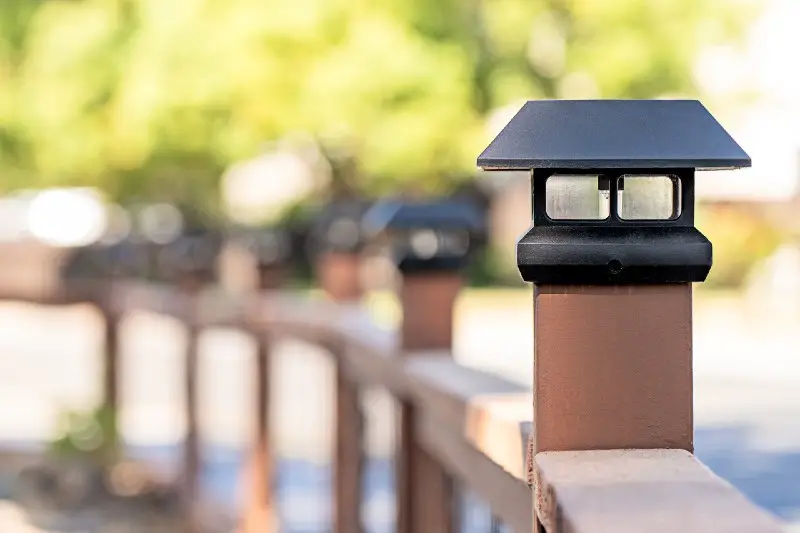
5. Conserve Energy by Switching Off
To keep your solar lights running smoothly and save energy, it’s a good idea to turn them off on days when they’re not needed, like during rainy weather.
You see when it’s raining, there usually isn’t enough sunlight for your solar panels to charge the batteries well.
This can lead to the batteries not charging fully, which might make your lights dimmer or even shorten their overall lifespan.
So, on those cloudy and rainy days, just switch off your solar lights.
Turning them off saves the batteries from working too hard without enough charge, which helps them last longer.
Plus, it conserves energy, keeping your solar lights ready and in great shape for those bright, sunny days when you want your garden to look its best.
Related article: Can Solar Lights Charge In Shade?
6. Consider the Impact of Darkness
Solar lights can sometimes get a bit confused by nearby artificial lighting, which can throw off their sensors.
These sensors are designed to detect when it gets dark so that the lights can turn on all by themselves.
But if they’re too close to something like a street lamp or your porch light, they might not realize it’s nighttime.
This could mean they don’t switch on when you need them to.
To keep your solar lights working the way they should, place them away from any artificial lights.
This helps ensure that they only react to the natural light changes that happen when the sun goes down and comes up.
Plus, keeping your solar lights away from other light sources means their sensors are less likely to wear out too soon.
They won’t be triggered all the time, which not only makes them more efficient but also helps them last longer.
7. Replace Worn-Out Batteries
If you’ve noticed your solar lights dimming too soon or not turning on at all, it’s probably time to check the batteries.
Worn-out batteries don’t just make your lights less effective—they can also stop them from working entirely.
So, when you see these signs, it’s a good hint that you need to swap out the old batteries for some new ones.
Replacing your batteries isn’t just about popping in any new ones you find.
You need to make sure they match the original batteries’ specifications, especially the voltage and current requirements.
This is important because using the wrong type of battery can strain or even damage your solar lights.
So, take a moment to look at the specs on your current batteries and find replacements that match perfectly.
Related article: How To Fix Solar Lights
FAQs
How Often Do Solar Lights Need to Be Replaced?
Solar lights need to be replaced every 2 to 5 years, depending on the quality of their components.
Why Do Solar Lights Stop Working So Quickly?
Solar lights often stop working quickly due to worn-out batteries or poor sunlight absorption.
How Long Do Solar Lights Stay Charged?
Solar lights stay charged for 4 to 12 hours, depending on the amount of sunlight they receive during the day.
Why Do Solar Lights Not Last Long?
Solar lights may not last long due to low-quality components or inadequate maintenance.
Conclusion
As promised, we’ve covered everything from the lifespan of solar lights to the tips & tricks you can follow to extend their efficiency.
But still, here’s a simple tip: Always keep track of their performance and write down notes.
This will help you in the future to handle different issues and categorize each problem properly.
If you still have any questions or concerns, feel free to leave a comment below.
I’m here to bring your solar lights back to life and help you to treat them just right!
Join our solar microdosing newsletter and get bite-sized, easy-to-understand insights into the world of solar energy.
From how solar panels work to building your own DIY solar system, we’ve got you covered.


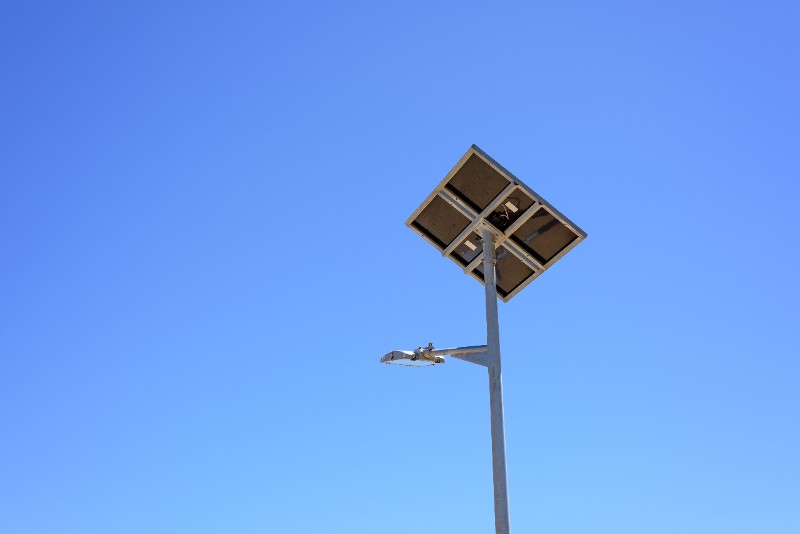
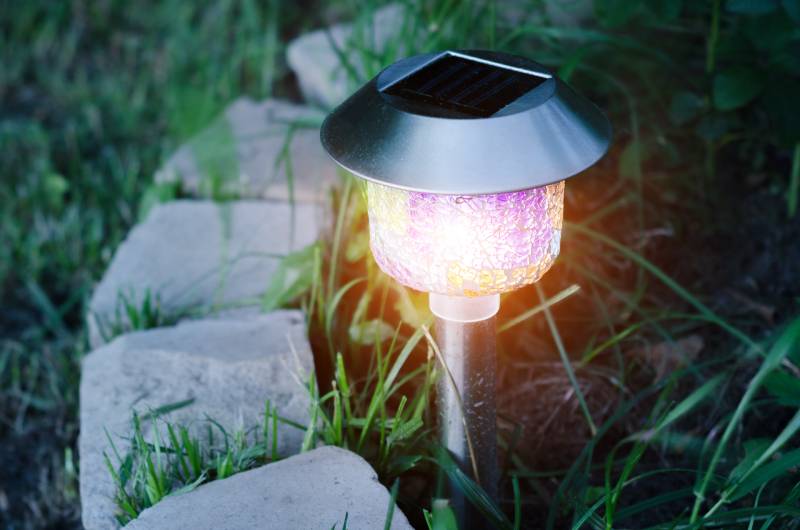
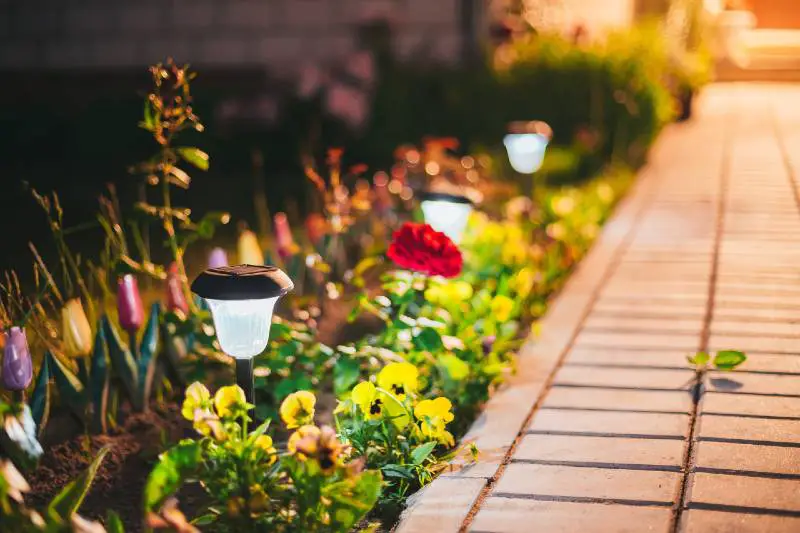
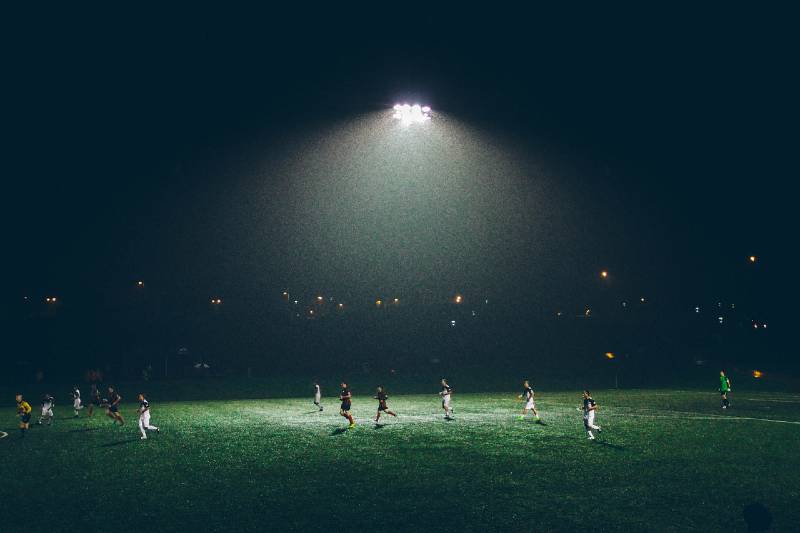
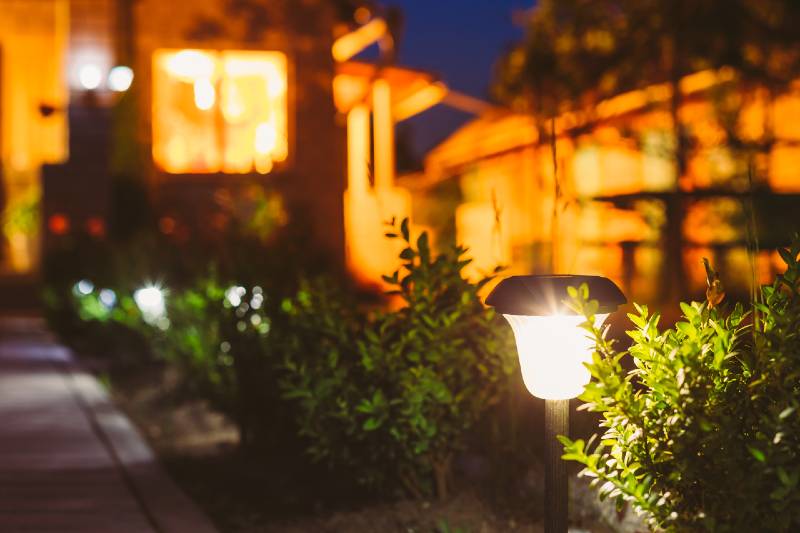

Kami,
Most solar path lights come with a plastic seal of her the panel. If you leave that seal on will that help to preserve the panels function? Or will it mask the charging function?
Thank you
Debbie
Hi Debbie, if you’re talking about the protective solar panel film, you should remove it. This film will prevent the solar panel from receiving adequate sunlight, resulting in lower energy production and working time.